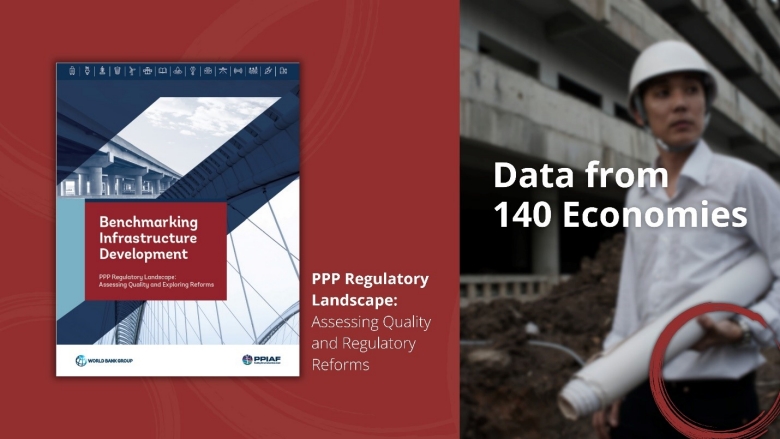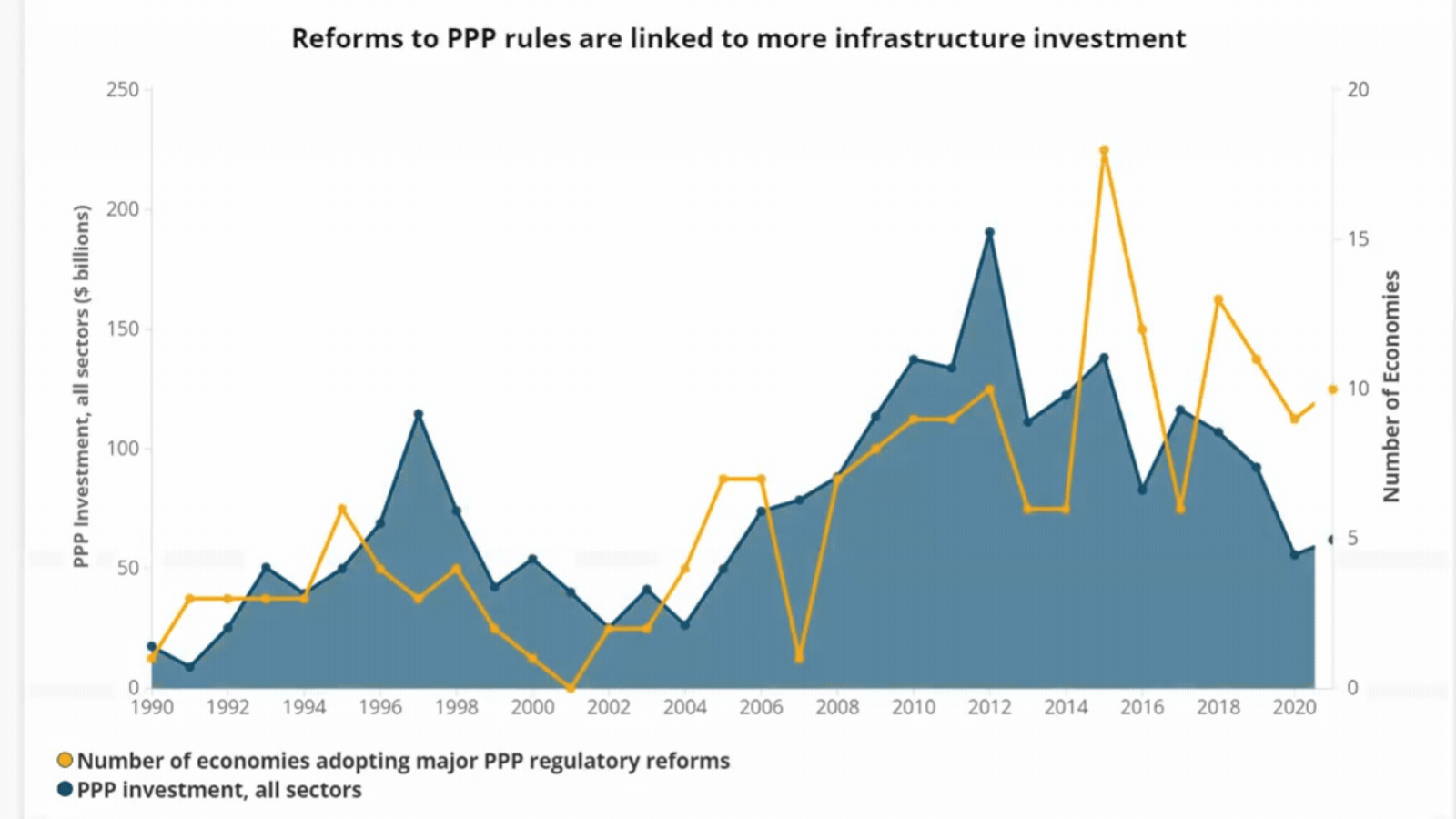Download Report
World Bank data shows infrastructure PPP investments increase by $488 million when the right regulations are in place.
WASHINGTON, September 25, 2024 – A World Bank analysis finds a strong correlation between regulatory reforms governing public-private partnerships (PPPs) and infrastructure investment. According to Benchmarking Infrastructure Development, countries that made major reforms to their PPP frameworks, saw, on average, a $488 million increase in infrastructure investment between 1990-2022.
"When clear rules are established, the infrastructure sector becomes far less daunting for private investors and improves countries’ access to funding," says Guangzhe Chen, Infrastructure Vice President at the World Bank. "With more financing available, governments are better positioned to deliver essential infrastructure projects that drive growth, create jobs and improve the daily lives of citizens.”
The newest edition of the World Bank’s Benchmarking Infrastructure Development report, first published in 2015, assesses PPP regulatory frameworks in 140 economies and tracks these regulations against internationally recognized good practices. According to the report, 45 economies passed reforms that strengthened their PPP regulatory frameworks between June 2019 and June 2022.
Even though PPP reforms have a strong link with increased investment levels in transport, energy, water, and information and communication technology, regulation is only one ingredient for a successful PPP ecosystem, explains the report. Advancing from one successful standalone PPP project to a sustainable program of infrastructure investments also depends on economic and political stability, public sector commitment, mature financial markets, effective risk allocation, and a government and partners with long-term vision, among other factors.

